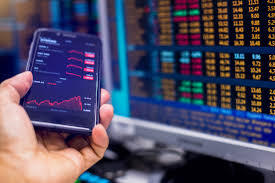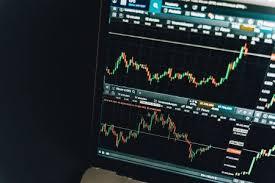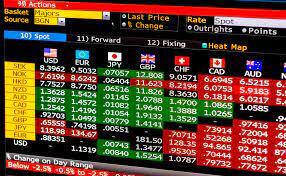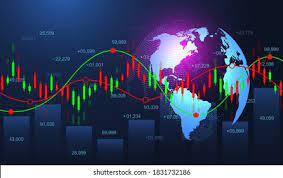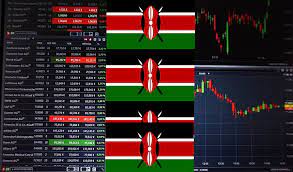
Introduction
Forex trading, also known as foreign exchange trading, is the act of buying and selling currencies in order to make a profit. As the global economy becomes more interconnected, the foreign exchange market has grown to become the largest financial market in the world. In Kenya, Forex trading has become increasingly popular as a means of generating income, especially for individuals looking to supplement their regular income or start their own businesses.
This beginner’s guide is designed to introduce new traders to the world of Forex trading and provide them with the knowledge and tools necessary to start maximizing their profits. From understanding the basics of currency pairs and exchange rates to developing a trading plan and implementing a trading system, this guide will cover everything a beginner needs to know to get started with Forex trading in Kenya.
In this guide, we will also discuss proven Forex trading strategies that have been tested and proven to be successful in the market. We will also discuss how to manage emotions and stick to a trading plan, which are essential for long-term success in the Forex market. By the end of this guide, readers will have a solid understanding of Forex trading and be well-equipped to start maximizing their profits in the Kenyan market.
Understanding the Basics of Forex Trading
Forex trading can seem overwhelming for beginners, but it is important to understand the basics before diving into the market. In this section, we will discuss the key concepts and terms that every Forex trader should know.
Understanding Currency Pairs and Exchange Rates: The foreign exchange market is based on the exchange of one currency for another. A currency pair is the combination of two currencies that are being traded against each other. The most commonly traded currency pairs are the Euro and the US Dollar (EUR/USD), the US Dollar and the Japanese Yen (USD/JPY), and the British Pound and the US Dollar (GBP/USD). The exchange rate is the value at which one currency can be exchanged for another. The exchange rate is constantly changing due to market conditions and economic factors.
Understanding the Role of a Broker: A broker is a company or individual that acts as an intermediary between the trader and the market. They provide access to the market and allow traders to buy and sell currencies. Brokers typically charge a commission or a spread, which is the difference between the bid and ask price of a currency pair. It is important to choose a reputable and regulated broker in order to ensure a fair and transparent trading experience.
Understanding the Different Types of Orders: Forex traders use different types of orders to enter and exit the market. The most common types of orders include market orders, limit orders, and stop-loss orders. Market orders are used to buy or sell a currency at the current market price. Limit orders are used to buy or sell a currency at a specific price, while stop-loss orders are used to limit potential losses by automatically closing a trade at a certain price.
By understanding the basics of currency pairs, exchange rates, the role of a broker, and different types of orders, traders can gain a solid foundation for their Forex trading journey. It is important to take the time to familiarize yourself with these concepts before entering the market to ensure a better understanding of the market dynamics.
Developing a Trading Plan
Developing a trading plan is an essential step for any Forex trader looking to maximize their profits. A trading plan outlines a trader’s goals, strategies, and risk management strategies, and serves as a roadmap for their trading activities.
Importance of a Trading Plan: Having a trading plan in place helps to keep traders focused and disciplined. It also helps to reduce the emotional impact of trading, as traders have a clear set of rules and guidelines to follow. A trading plan also helps traders to identify and take advantage of opportunities in the market.
Elements of a Successful Trading Plan: A successful trading plan should include the following elements:
- Trading goals: What are the trader’s financial and personal goals for trading?
- Trading strategies: What methods will the trader use to enter and exit the market?
- Risk management: What measures will the trader take to manage and limit their risk?
- Performance monitoring: How will the trader track their performance and make adjustments to their plan?
Setting Goals and Risk Management: Setting specific, measurable, and achievable goals is crucial for success in Forex trading. Traders should also have a clear understanding of the amount of risk they are willing to take on and should have a plan in place to manage that risk. This can include setting stop-loss orders, using leverage responsibly, and diversifying their portfolio.
By developing a solid trading plan, traders can increase their chances of success in the Forex market. It is important to regularly review and update the trading plan as needed, in order to stay aligned with market conditions and personal goals.
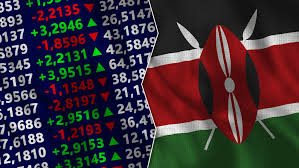
Proven Forex Trading Strategies
Proven Forex trading strategies are essential for traders looking to maximize their profits in the market. These strategies are based on technical analysis and market trends and have been tested and proven to be successful by traders around the world.
Overview of Popular Trading Strategies: There are many different trading strategies that traders can use, each with its own set of rules and guidelines. Some of the most popular strategies include:
- Breakout strategy: This trading strategy involves identifying key levels of support and resistance, and then entering the market when the price breaks through these levels.
- Trend following strategy: This strategy involves identifying the overall direction of the market, and then entering trades in the direction of the trend.
- Position trading strategy: This strategy involves holding positions for a longer period of time, usually weeks or months, in order to take advantage of larger market movements.
Breakout Strategy: The breakout trading strategy is based on the idea that prices tend to break out of key levels of support and resistance. Traders using this strategy will identify these levels, and then enter the market when the price breaks through them. This strategy can be used in any time frame and is best suited for traders who are looking for short-term gains.
Trend-Following Strategy: The trend-following trading strategy is based on the idea that the market tends to move in a certain direction over time. Traders using this strategy will identify the overall direction of the market, and then enter trades in that direction. This strategy is best suited for traders who are looking for medium-term or long-term gains, as positions are typically held for several weeks or months.
Position Trading Strategy: Position trading strategy is based on the idea of holding a position for a longer period of time, usually weeks or months, in order to take advantage of larger market movements. This strategy is best suited for traders who are looking for long-term gains and are able to withstand short-term volatility.
By understanding and implementing proven Forex trading strategies, traders can increase their chances of success in the market. It is important to note that no single strategy is guaranteed to be successful, and traders should always use a combination of strategies and adapt them as needed to suit their personal goals and risk tolerance.
Managing Emotions and Sticking to a Trading Plan
Managing emotions and sticking to a trading plan is crucial for long-term success in Forex trading. Emotions can have a powerful impact on trading decisions, and it is important for traders to learn how to manage them in order to avoid costly mistakes.
Managing Emotions: The Forex market can be highly volatile and emotionally charged, making it easy for traders to fall into the trap of making impulsive decisions. It is important to understand that emotions are a natural part of trading and that it is possible to manage them in a way that is beneficial to trading performance. Some strategies that traders can use to manage emotions include:
- Setting realistic goals and expectations
- Keeping a trading journal
- Taking regular breaks
- Practising mindfulness and meditation
- Seeking professional help if needed
Sticking to a Trading Plan: A trading plan is a roadmap for a trader’s trading activities, and it is important to stick to it in order to achieve long-term success. However, it is common for traders to deviate from their plan when emotions take over. Some strategies for sticking to a trading plan include:
- Reminding yourself of your goals and why you developed the plan
- Keeping a trading journal to track progress and identify areas for improvement
- Reviewing the plan regularly and making adjustments as needed
- Holding yourself accountable for sticking to the plan
By managing emotions and sticking to a trading plan, traders can increase their chances of success in the Forex market. It is important to remember that trading is a long-term endeavour and that it takes time, patience and discipline to achieve consistent results.
Staying Up-to-Date with Market News and Analysis
Staying up-to-date with market news and analysis is crucial for Forex traders looking to maximize their profits. Economic and political events can have a significant impact on currency prices, and it is important for traders to have a good understanding of these events in order to make informed trading decisions.
Importance of Staying Up-to-Date: Economic and political events can have a significant impact on currency prices, and it is important for traders to have a good understanding of these events in order to make informed trading decisions. For example, a change in interest rates or a natural disaster can have a major impact on a currency’s value. By staying up-to-date with market news and analysis, traders can stay ahead of the curve and make more informed trading decisions.
Sources of Market News and Analysis: There are many sources of market news and analysis that traders can use to stay up-to-date. Some of the most popular sources include:
- Economic calendars: Economic calendars provide a schedule of upcoming economic events and releases, such as interest rate decisions, GDP reports, and inflation numbers.
- News websites: Websites such as Bloomberg, Reuters, and CNN Money provide up-to-date news on economic and political events that can impact currency prices.
- Social media: Many traders use social media platforms such as Twitter and LinkedIn to stay up-to-date with market news and analysis.
- Economic reports: Reports such as the World Economic Outlook and the Global Financial Stability Report provide detailed analysis of global economic and financial conditions
Utilizing Trading Tools and Software
Utilizing trading tools and software is an essential part of maximizing profits in Forex trading. These tools and software can help traders to analyze the market, make informed trading decisions, and automate certain aspects of the trading process.
Types of Trading Tools and Software: There are many different types of trading tools and software available to traders, including:
- Technical analysis software: This software allows traders to analyze charts and identify trends and patterns in the market.
- Trading platforms: Trading platforms such as MetaTrader 4 and 5 allow traders to access the market and make trades.
- Automated trading software: This software allows traders to automate certain aspects of the trading process, such as placing trades and setting stop-loss orders.
- News and analysis software: This software provides traders with up-to-date news and analysis on economic and political events that can impact currency prices.
- Risk management software: This software helps traders to manage and limit their risk by providing tools such as stop-loss orders and position size calculators.
Benefits of Trading Tools and Software: Using trading tools and software can help traders to:
- Analyze the market more effectively
- Make more informed trading decisions
- Automate certain aspects of the trading process
- Stay up-to-date with market news and analysis
- Manage and limit their risk
It is important for traders to research and choose trading tools and software that best suit their needs and goals. It is also important to keep in mind that these tools and software are not a guarantee of success and should be used in conjunction with a solid trading plan and a thorough understanding of the market.

